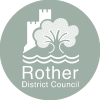The regulations apply to hedgerows that are on, or alongside:
- Land used for agriculture and forestry;
- Common land, including village greens;
- Land used for keeping horses, ponies or donkeys;
- Local Nature Reserves or Sites of Scientific Interest.
Regulations do NOT apply to any hedgerow that:
- Forms a boundary of a residential garden;
- Is located within an industrial area;
- Is shorter than 20m in length (unless both ends join up with other hedgerows and it is part of a longer hedgerow).
Even where the regulations apply, it may not be necessary to seek permission from the Council. Permission is not needed to remove a rural hedgerow in the following circumstances:
- To gain access, either in place of an existing opening, provided a new stretch of hedgerow is planted to fill the original entrance, or when another means of entry was not available except at disproportionate cost;
- To gain temporary entry to help in an emergency;
- To comply with a statutory plant or forestry health order;
- To comply with a statutory notice, for prevention interference with electrical lines and apparatus; in connection with statutory drainage or flood defence work; and
- To implement a planning permission (but in the case ‘permitted development’ rights, most hedgerow removal will need prior permission for the Council).
What constitutes a Protected Hedgerow?
When considering whether a hedgerow can be removed or not is a matter for the District Council’s Planning Department. However, the Council has developed a criterion which enables it to determine whether a hedge should be removed.
When an application has been submitted, the Council will investigate the following things to assist with its determination:
- Check against historic maps and with the County Council’s Archaeology Department to see whether the Hedgerow is classified as being an Ancient Hedgerow;
- To investigate whether the removal of the hedgerow will adversely affect the character and appearance of the surrounding countryside;
- Check whether any protected species are currently nesting within the hedgerow;
- Examine reasons why this hedgerow needs to be removed.
What is an important hedgerow?
According to the Regulations, a hedgerow is ‘important’ if it is more than 30 years old, and meets at least one of the following criteria:
- It makes a pre-1859 parish or township boundary;
- It incorporates an archaeological feature;
- It is part of, or associated with an archaeological site;
- It marks the boundary of, or is associated with, a pre-1600 estate or manor;
- It forms an integral part of a pre-Parliamentary enclosed field system;
- It contains certain categories of species of birds, animals or plants listed in the Wildlife and Countryside Act or Joint Nature Conservation Committee publications;
- It includes, on average, in a 30m length:
- At least 7 woody species (see Appendix 1 for list of ‘woody species’), or
- At least 6 woody species, and at least 3 of the associated features (see below), or
- At least 5 woody species, and at least 4 of the associated features (see below), or
- At least 5 woody species, and it runs along a bridleway, footpath, road used as a public path, or byway open to all traffic, and it includes at least 2 of the associated features.
Associated Features
- A bank or wall supporting the hedgerow;
- Less than 10 % gaps;
- On average, at least one tree per 50 metres;
- At least three species from a list of 57 woodland plants (see Appendix 1)
- A ditch or watercourse;
- A number of connections with other hedgerows, ponds or woodlands; and
- A parallel hedge within 15 metres.
Nesting Seasons
Bird Nesting season is classed as being from 1st March until 31st July. Vegetation or site clearance should be done outside of the nesting season (1st March – 31st July inclusive), although the nesting period may start before this and extend beyond it, in many cases (e.g. barn owls can breed at any month of the year in the UK). This is to avoid impact to nesting birds and infringement of the Wildlife and Countryside Act 1981. If clearance work has to be undertaken during the nesting season, a breeding bird survey needs to be carried out by a suitably qualified person. As a general rule, it should be assumed that birds will be nesting in trees, scrub, reeds or substantial ditch side vegetation during the core breeding period, unless a survey had shown this not to be the case. In addition, some species are ground nesting, such as the skylark and lapwing, both of which can occur on grassland areas and cleared sites where there is a time lapse between demolition and development.
Any active nests identified should be protected until the young have fledged. Where a Schedule 1(3) species is involved, mitigation for impacts, e.g. loss of nesting site, should be devised and implemented. Particular attention should be paid to any site clearance/development work affecting buildings, as this is where swifts, swallows, house martins and barn owls preferentially choose to nest.
Legal Protection
All wild birds are protected under the Wildlife and Countryside Act 1981 (as amended), whilst they are actively nesting or roosting. Section 1 of this Act, makes it an offence to kill, injure or take any wild bird, and to intentionally take, damage or destroy the nest of any wild bird while that nest is in use or being built. It is also an offence to take or destroy any wild bird eggs.
In addition, bird species listed under Schedule 1 of the Act receive extra protection. The Act states that ‘it is an offence to intentionally or recklessly disturb any wild bird listed in Schedule 1 while it is nest building, or at (or near) a nest containing eggs or young, or disturb the dependent young of such a bird’. The maximum penalty for each offence in the Magistrates’ Court is a £5000 fine and/or six months imprisonment and a £5000 fine and two years’ imprisonment in the Crown Court.
Exceptions
An authorised person (i.e. someone who has the written consent or the owner or occupier), may fell or prune a dangerous tree in order to preserve public health and safety. If Schedule 1 birds would be affected, then a licence from DEFRA is required. Similarly a licence is also required for tree work deemed necessary for reasons other than health and safety.
Accidental injury, killing or disturbance of a wild bird, as a result of a lawful tree operation may not be an offence, provided it can be shown that the harm could not have been reasonably avoided.
Applying for Hedgerow Removal
To apply for hedgerow removal please refer to the link below for more advice:
Once an application has been submitted, the Council will then have 42 days to decide whether the hedgerow is ‘important’.
No work should commence before the 42-day period ends, unless the Council has given consent in writing. Where the Council has given consent, the proposed work must be undertaken within a two year period. Only the work described in the notice submitted to the Council should be done.
If the Council considers that the hedgerow is ‘important’ in terms of the criteria above, it will within the 42-day period, issue a Hedgerow Retention Notice.
Reporting Unlawful Hedgerow Removal
If you are concerned about a removal of a hedgerow and are not sure whether it has permission from the Council, contact the Planning Team on 01909 533 533 or by email: planning-enforcement@rother.gov.uk
Applying for Retrospective Planning Consent
If you have removed a section of hedge and not sought consent from the Council, then it is important for you to apply retrospectively. This gives the landowner an opportunity to apply and submit justification as to why a hedgerow needed to be removed. Failure to supply this information could result in the retrospective consent being refused and an enforcement case brought against the offender.
To apply for retrospective hedgerow removal please refer to the link below for more advice:

